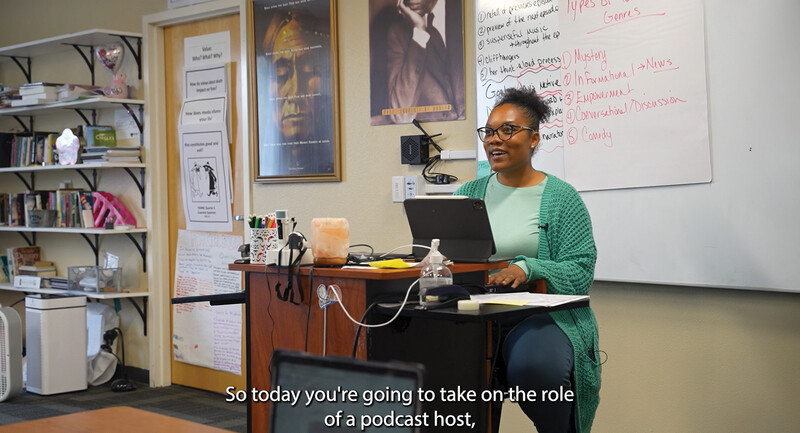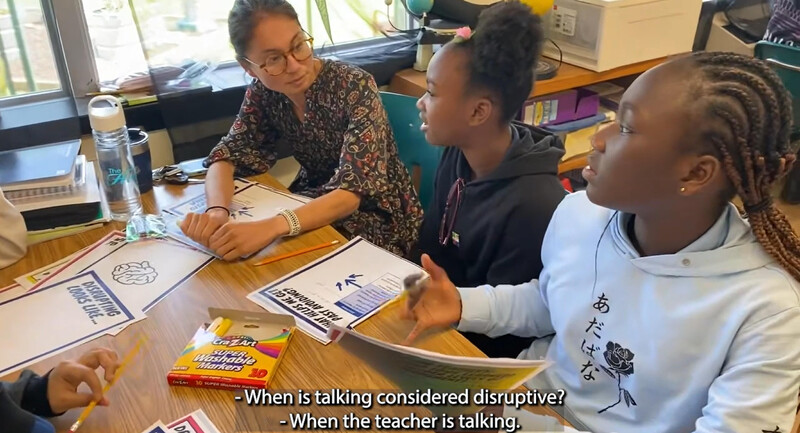“Co-teaching” has become a buzzword in education; but, remains a nebulous term. I’ve seen many educators or paraprofessionals refer to themselves as “co-teachers,” but in truth, they merely stand on the sidelines watching the classroom teacher teach.
I am an Instructional Coach/Reading Specialist at a large, urban high school and seldom do I co-teach. In fact, I consider myself a support person. According to the Wisconsin Department of Public Instruction, the definition of co-teaching is:
Co-Teaching is utilizing two or more professionals with equivalent licensure that share instructional responsibility and accountability for a single group of students for whom they both have ownership.
I have an “equivalent licensure,” with a #317 Reading Specialist license and a Master’s Degree in Education. Sometimes, I share “instructional responsibility” when I collaborate in creating lessons. But that’s where it ends. I don’t have “accountability for a single group of students,” I am not responsible for their grades.
But I consider myself highly responsible for their learning.
During the year, I often collaborate with our junior English teacher and Special Education teacher. This particular junior class has several special education students. As a result, the SPED teacher is in the classroom modifying, scaffolding and revising lessons for student success.
We usually meet when the classroom teacher is starting a new short story, novel, poem, drama or writing opportunity. We begin by asking: What is the purpose of the lesson and what do we want our students to know and be able to do? At this time, we share possibilities of skills, strategies, resources and other ideas. Each of us has an equal, respected voice; deferring to our colleague’s level of expertise.
Recently we met because the classroom teacher wanted a strategy that would engage students in asking different types of questions – some with answers, some open-ended. The Special Education teacher recommended Question-Answer-Relationship, a strategy created and developed by Dr. Taffy Raphel. I suggested three resources that scaffolded QAR. The first resource was the traditional Q-A-R chart divided into three categories: “Right There,” “Think and Search” and “Author and Me.” This particular graphic organizer could be offered to those students who feel confident in creating their own questions.
The next resource I suggested was a modification I created offering question starters within each category based on Bloom’s Taxonomy and Webb’s Depth of Knowledge. In that way, students who needed assistance in creating questions had help in writing them.
The final resource I produced was an adaptation of QAR that merged Blooms Taxonomy to Doug Buehl’s Self-Questioning Taxonomy for Literature. These were not sentence starters, but rather open-ended questions aimed at assisting students in thinking more conceptually than linearly.
As a result of this meeting, we created a lesson based solely on student inquiry, but scaffolded depending upon the student’s abilities. We wanted students to see how they could transcend from generating basic recall questions to eventually crafting creating questions.
As the class was reading Sherman Alexie’s short story entitled, “Do You Know Where I Am?” from his novel Ten Little Indians, the Special Education teacher was sitting among the students, the classroom teacher stood in front of the room and I stood in the back. Using the resource that I created based on Blooms and DOK, the teacher asked students to generate one more question modeled after the question starters in each category. The Special Education teacher gathered several students and showed them how to use the question starters to create one of their own. The classroom teacher and I began to move around the room listening to student conversation and encouraging students to continue their thinking.
The classroom teacher asked students for some key words from their conversations. As he called on students, I moved to the front of the class and began to write their keywords on the whiteboard. The Special Education teacher offered words of encouragement to students to share their thoughts. She even convinced one student to write his keyword on the board.
The lesson continued with all of us weaving in and out of each other’s sentences and checking student notes and listening in to student conversations.
When the lesson was over, we debriefed. The classroom teacher felt this lesson successfully checked off his purpose and goal. He wanted students to use inquiry to create critical thinking questions, realizing that some students might need assistance and support to create basic recall questions. We didn’t focus on what students couldn’t do; we concentrated on what they could do within their abilities.
If you were to ask us if we “co-taught” the lesson, I am confident all of us would say no, only because we don’t necessarily see our relationship as co-teachers but rather responding to the needs of our students. However, according to Marilyn Friend, we certainly worked “as partners to teach a diverse group of students” (2008, p. 9), and we created “a learning situation that can’t be produced by a solo teacher” (2008, p. 9). We gave our students what they needed to be effective and empowered.
In closing, co-teaching will remain a hot button issue because of the various definitions and models associated with it. However, the key for us is respect toward each other’s skills and knowledge. That respect translates to student success and empowerment in the classroom and beyond.
Peg Grafwallner, M.Ed., is an Instructional Coach/Reading Specialist at a large urban school in Milwaukee, WI. As an English teacher, at-risk educator and reading specialist, Peg has taught advanced English and developing readers. Currently, Peg models, coaches and assists teachers in creating comprehensive literacy lessons meant to enhance skill-building; in addition to providing instructional support to teachers district-wide. Peg is a blogger, author, and national presenter with articles appearing in ASCD, Edutopia, Exceptional Parent, Literacy Daily, Literacy and NCTE and the WSRA Journal. Peg can be reached at peggrafwallner@hotmail.com or at https://peggrafwallner.com.








